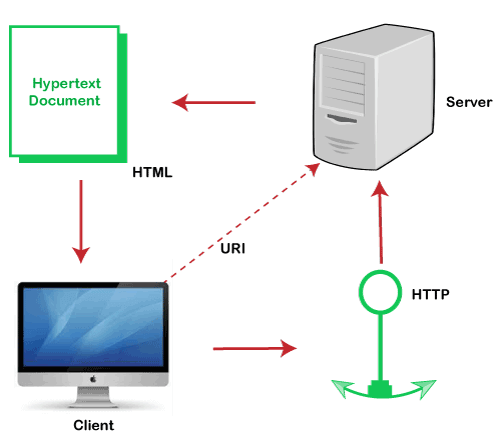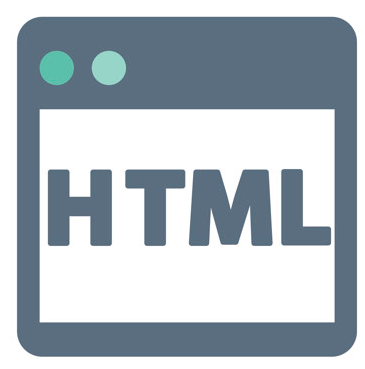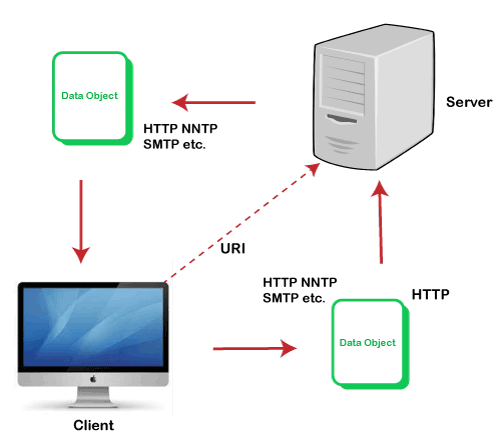Tutorial
Physical Layer
Data Link layer
Network Layer
Routing Algorithm
Transport Layer
Application Layer
Network Security
Misc
- Router
- OSI vs TCP/IP
- TCP vs UDP
- Transmission Control Protocol
- TCP port
- IPv4 vs IPv6
- ARP Packet Format
- ARP Table
- Working of ARP
- FTP Client
- FTP Commands
- FTP Server
- I2C Protocol
- Sliding Window Protocol
- SPI Protocol
- IP
- ARP Commands
- ARP
- Address Resolution Protocol
- ARP and its types
- TCP Retransmission
- CAN protocol
- HTTP Status Codes
- HTTP vs HTTPS
- RIP Protocol
- UDP Protocol
- ICMP Protocol
- MQTT protocol
- OSPF Protocol
- Stop and Wait Protocol
- IMAP Protocol
- POP Protocol
- CIFS
- DAS
- DIMM
- iSCSI
- NAS (Network Attached Storage)
- NFS
- NVMe
- SAN
- Border Gateway Protocol
- Go-Back-N ARQ
- RJ Cable
- Difference between Connection-Oriented and Connectionless Service
- CDMA vs. GSM
- What is MAC Address
- Modem vs. Router
- Switch Vs. Router
- USB 2.0 vs 3.0
- Difference between CSMA CA and CSMA CD
- Multiple access protocol- ALOHA, CSMA, CSMA/CA and CSMA/CD
- URI vs URL
- IMAP vs. POP3
- SSH Meaning| SSH Protocol
- UTP vs STP
- Status Code 400
- MIME Protocol
- IP address
- proxy server
- How to set up and use a proxy server
- network security
- WWW is based on which model
- Proxy Server List
- Fundamentals of Computer Networking
- IP Address Format and Table
- Bus topology and Ring topology
- Bus topology and Star topology
- Circuit Switching and Packet switching?
- Difference between star and ring topology
- Difference between Router and Bridge
- TCP Connection Termination
- Image Steganography
- Network Neutrality
- Onion Routing
- Adaptive security appliance (ASA) features
- Relabel-to-front Algorithm
- Types of Server Virtualization in Computer Network
- Access Lists (ACL)
- What is a proxy server and how does it work
- Digital Subscriber Line (DSL)
- Operating system based Virtualization
- Context based Access Control (CBAC)
- Cristian's Algorithm
- Service Set Identifier (SSID)
- Voice over Internet Protocol (VoIP)
- Challenge Response Authentication Mechanism (CRAM)
- Extended Access List
- Li-fi vs. Wi-fi
- Reflexive Access List
- Synchronous Optical Network (SONET)
- Wifi protected access (WPA)
- Wifi Protected Setup (WPS)
- Standard Access List
- Time Access List
- What is 3D Internet
- 4G Mobile Communication Technology
- Types of Wireless Transmission Media
- Best Computer Networking Courses
- Data Representation
- Network Criteria
- Classful vs Classless addressing
- Difference between BOOTP and RARP in Computer Networking
- What is AGP (Accelerated Graphics Port)
- Advantages and Disadvantages of Satellite Communication
- External IP Address
- Asynchronous Transfer Mode (ATM)
- Types of Authentication Protocols
- What is a CISCO Packet Tracer
- BOOTP work
- Subnetting in Computer Networks
- Mesh Topology Advantages and Disadvantages
- Ring Topology Advantages and Disadvantages
- Star Topology Advantages and Disadvantages
- Tree Topology Advantages and Disadvantages
- Zigbee Technology-The smart home protocol
- Network Layer in OSI Model
- Physical Layer in OSI Model
- Data Link Layer in OSI Model
- Internet explorer shortcut keys
- Network Layer Security | SSL Protocols
- Presentation Layer in OSI Model
- Session Layer in OSI Model
- SUBNET MASK
- Transport Layer Security | Secure Socket Layer (SSL) and SSL Architecture
- Functions, Advantages and Disadvantages of Network Layer
- Protocols in Noiseless and Noisy Channel
- Advantages and Disadvantages of Mesh Topology
- Cloud Networking - Managing and Optimizing Cloud-Based Networks
- Collision Domain and Broadcast Domain
- Count to Infinity Problem in Distance Vector Routing
- Difference Between Go-Back-N and Selective Repeat Protocol
- Difference between Stop and Wait, GoBackN, and Selective Repeat
- Network Function Virtualization (NFV): transforming Network Architecture with Virtualized Functions
- Network-Layer Security | IPSec Modes
- Next - Prev Network-Layer Security | IPSec Protocols and Services
- Ping vs Traceroute
- Software Defined Networking (SDN): Benefits and Challenges of Network Virtualization
- Software Defined Networking (SDN) vs. Network Function Virtualization (NFV)
- Virtual Circuits vs Datagram Networks
- BlueSmack Attack in Wireless Networks
- Bluesnarfing Attack in Wireless Networks
- Direct Sequence Spread Spectrum
- Warchalking in Wireless Networks
- WEP (Wired Equivalent Privacy)
- Wireless security encryption
- Wireless Security in an Enterprise
- Quantum Networking
- Network Automation
- Difference between MSS and MTU
- What is MTU
- Mesh Networks: A decentralized and Self-Organizing Approach to Networking
- What is Autonomous System
- What is MSS
- Cyber security & Software security
- Information security & Network security.
- Security Engineer & Security Architect
- Protection Methods for Network Security
- Trusted Systems in Network Security
- What are Authentication Tokens in Network security
- Cookies in Network Security
- Intruders in Network Security
- Network Security Toolkit (NST) in virtual box
- Pivoting-Moving Inside a Network
- Security Environment in Computer Networks
- Voice Biometric technique in Network Security
- Advantages and Disadvantages of Conventional Testing
- Difference between Kerberos and LDAP
- Cyber security and Information Security
- GraphQL Attacks and Security
- Application Layer in OSI Model
- Applications of Remote Sensing
- Seven Layers of IT Security
- What is Ad Hoc TCP
- What is Server Name Indication(SNI)
WWW is based on which model

WWW or World-Wide Web or W3 is a wide-area hypertext-based information retrieval system intending to provide extensive access to a vast universe of data.
WWW is a method of browsing all the online data present on the Internet. The users can seamlessly access the large universe of documents present on different websites from any corner of the world across the Internet with the help of their electronic devices such as computers, desktops, MacBooks, smartphones, etc.
This tutorial will briefly cover all the details related to the model on which WWW (World Wide Web) is based upon. If you want to learn regarding the definition and components of WWW in details refer to What is World Wide Web?
Basic World-Wide Web Model
World-Wide Web or WWW is created on the basic model of client-server concept and hypertext data objects. (You can refer to the pictorial diagram of the above model in the figure given below). With time, the WWW model has been expanded from a client-server application to a general resource accessing model.

The above model indicates the initial concept of WWW represented in the HTTP Protocol (with a version of 0.9) and HTML applications (with a version of 1.0). However, the World Wide Web specs have been quickly developing during the last few years, even though the latest WWW approach is still based on a client-server model.
Because the model is based on HTML and HTTP-based approaches, therefore WWW can handle virtually any information format present on the Internet with the help of a comprehensive collection of access methods aside from HTTP, unlike Telnet, FTP, Gopher WAIS, etc. In simple terms, the World-Wide Web works as a generic data interchange device to access data available across the Internet.
Before moving to the latest advanced model of the World-Wide Web, it is necessary to cover all the vital components present in the WWW model. The brief explanation of all the elements present within the World-Wide Web concept is given below:
1. The Client
In the above flowchart, the client represents the user's interface that generates request to the server. The user interface remains consistent and works in the same manner with any form of service requested. Therefore users do not require to learn the variations between the many different access systems used every day on the Internet. The concept of the client model works with the same approach as other popular software's, unlike Microsoft Windows, Machintosh, etc., where the user is constantly presented with the corresponding Graphical User Interface (GUI interface).
2. Uniform Resource Identifier or URI
Every data object present over the internet has some associated address or a namespace linked with it that holds information about hosts and all the sources present on each host. The WWW model describes URIs as a generic syntax for encoding the namespace and addresses of information types on the web and it also defines the process to access them. The model of URIs includes.
- Universal Resource Identifier (URI)
URI is defined as a generic collection of all addresses in the address space of all data objects available on the web. They represent a hierarchical naming plot combined with the HTTP protocol creating a significant distinction between the WWW and other web access schemes. - Uniform Resource Locator (URL)
URL is defined as the unique address of a specific resource that is available on the Web.. The URLs is designed on the concepts of the currently used Internet protocols supported by the WWW, i.e., HTTP, FTP, WAIS, etc. They are started with www followed by http/https/ftp with a specific directory path, their respective file name, and possibly a search directive. - Uniform Resource Name (URN)
However, the ultimate goal for URIs is to be unique persistent identifiers that are allocated within the specified namespaces and are accessible for an extended period, even after the resource they classify discontinues to exist or becomes unavailable. - Uniform Resource Citation (URC)
URC is used to store the Meta information of a URI. They hold the pairs of attribute/value which can have all the related information such as the content writer, publisher, published date, etc. Though, the concept of URC is not used in the current scenario.
3. The Server
The primary application of the server is to handle all the requests sent from the user. It can either be a locally accessible device or ask for the request file or data from another server; in this scenario, the initial server temporarily acts as a client.
4. Hypertext Transport Protocol HTTP

HTTP or Hypertext Transport Protocol is a comprehensive stateless layer protocol containing the same components as other Internet layer protocols. The HTTP protocol is also designed on the client-server application model, where the server provides quick responses wherever the client generates any request.
The basic model of HTTP protocol format is designed on the guidelines of MIME Protocol with an assemblage of HTTP Headers likely supported by a message body holding a data object in any 7-bit or 8-bit received by the user interface. The user decides what format it can handle from the default list of standard headers in the request. The latest HTTP version (1.0) is designed and developed on the roots of the TCP Protocol. TCP is a connection oriented protocol that provides a 3 way handshake connection formation.
The primary WWW model represents that the client is responsible for initiating a request. Further, the server handles that request and responds to it by sharing the respective data object back to the client. The client usually needs to post a data object to the server, for example, sending an email, creating a new file, or posting a newsgroup on the remote server. HTTP protocol offers two methods to transfer your data object from the client's device to the server. However, there is no surety that the request will be successfully made or not (not even on a successful return code) as the action can be canceled anytime by the accountable person of the remote server.
One of the HTTP protocol features is that it is a superset of the other Layer backed by the World Wide Web model. It indicates that the HTTP protocol can handle data objects produced by other protocols by binding them with various HTTP/MIME headers around the object. Therefore it is a vital feature for the notion of Proxy servers.
5. Hypertext Markup Language

HTML or Hypertext Markup language is defined as a users' interface language used to generate information on WWW (World-Wide Web). It is a hypertext markup language that supports the easy flow of communication over the network. Though, it is not mandatory to story the files within HTML. The servers can also store the document types in any format and then create its HTML type whenever it receives any file request from the client. Therefore we can conclude that it stores the documents virtually instead of static documents. HTML is widely used over the internet to represent the following:
- Hypertext data, e-mail, digital document types or media, and collaborative hypermedia
- Menus, tables, and various other options
- Database query events
- Manageable structured data combined with multimedia components like images, music, and video.
- URI-Links to different sources on the Internet.
HTML is designed on the International Standard ISO 8879 Standard Generalized Markup Language (SGML) guidelines. SGML is a platform for describing structured data objects and markup languages to signify occurrences of the data objects or document type. Therefore HTML is also a Document Type Definition (DTD) applied on top of an SGML (Standard Generalized Markup Language) parser.
Advanced World-Wide Web Model

The current WWW model is very interactive but is also designed on a client-server concept. The latest model is a generic resource exchange-based approach. The latest model allows the client to post data to the server (if the requested server also enables this service). In contrast, in the earlier model, the client has limited data flowing options, and it was mainly done from the server to the client. Furthermore, it has also introduced various data transfer formats in the message body ranging from 7-bit ASCII data to 8-bit binary data. In this model, any protocol can (supported by WWW) transfer source. Still, the prime protocol used in this model is HTTP, as it can be further applied to encapsulate the other protocols.


